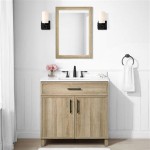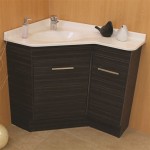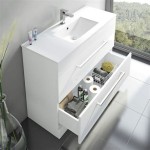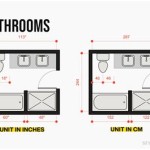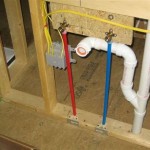How Much Does It Cost To Fit A Bathroom Ventilation Fan?
Proper bathroom ventilation is crucial for maintaining a healthy and comfortable home environment. It helps control humidity, prevent mold and mildew growth, and eliminate unpleasant odors. A bathroom ventilation fan plays a significant role in achieving this. However, understanding the costs associated with installing or replacing such a fan is essential for budgeting and planning purposes. The overall expense can vary greatly depending on several factors, including the type of fan, the complexity of the installation, and the geographical location.
The cost of fitting a bathroom ventilation fan comprises several components, primarily the cost of the fan itself, the labor charges for installation, and any associated materials or modifications required to accommodate the new fan. Each of these elements can fluctuate based on specific circumstances, making it difficult to provide a single, definitive price. Instead, a detailed breakdown of each contributing factor will provide a comprehensive understanding of the potential costs involved.
The initial consideration is the price of the ventilation fan itself. These fans range widely in price, from basic models suitable for small bathrooms to more advanced, feature-rich units designed for larger spaces or specialized needs. Understanding the different types of fans and their respective functions is critical in making an informed purchasing decision.
Ventilation Fan Types and Pricing
Bathroom ventilation fans can be categorized into several types, each with its own price range. These categories typically include basic exhaust fans, more advanced models with features like humidity sensors or timers, and combination units that incorporate lighting or heating elements. The size of the bathroom, the presence of a shower or tub, and the specific needs of the occupants all influence the type of fan that is most suitable.
Basic exhaust fans are the most common and generally the least expensive option. These fans typically feature a simple on/off switch and are designed primarily to remove moisture and odors from the bathroom. The price for a basic exhaust fan can range from $20 to $75, depending on the airflow capacity (measured in cubic feet per minute or CFM) and the brand. These are suitable for smaller bathrooms with minimal moisture buildup.
More advanced models often include features such as humidity sensors, which automatically turn the fan on when the humidity level reaches a certain threshold, and timers, which allow the fan to run for a set period after the light switch is turned off. These features can significantly improve the fan's effectiveness and energy efficiency. The price range for these advanced models typically falls between $75 and $200. These are better suited for larger bathrooms or bathrooms with frequent shower use.
Combination units, which incorporate lighting or heating elements, represent the higher end of the price spectrum. These units can provide additional functionality and convenience but come at a higher cost. A ventilation fan with integrated lighting can eliminate the need for a separate light fixture, while a unit with a heating element can provide supplemental warmth during colder months. The price for combination units generally ranges from $150 to $400 or more, depending on the features and quality.
Beyond the basic types, consider noise levels. Ventilation fans are rated in sones, a measure of perceived loudness. Quieter fans, typically those rated at 1.0 sone or less, are more expensive but can greatly improve the user experience. Individuals sensitive to noise may find the extra investment worthwhile. Energy efficiency ratings are also important. Look for Energy Star certified fans, which use less energy and can save money on electricity bills over time. The initial higher cost of an energy-efficient fan can be offset by long-term savings.
Labor Costs for Installation
The labor cost associated with installing a bathroom ventilation fan is often the most significant component of the overall expense. These costs can vary considerably depending on the complexity of the installation, the location of the bathroom, and the prevailing labor rates in the area. Simple replacements of existing fans are generally less expensive than new installations, which may require running new electrical wiring and ductwork.
For a straightforward replacement of an existing fan, expect to pay between $75 and $200 for labor. This assumes that the existing wiring and ductwork are in good condition and compatible with the new fan. The electrician or contractor will simply remove the old fan and install the new one in its place, making the necessary electrical connections and ensuring proper ventilation.
New installations are inherently more complex and therefore more expensive. This type of installation typically involves running new electrical wiring from the nearest power source to the fan location, installing ductwork to vent the air outside the house, and cutting an opening in the ceiling or wall to accommodate the fan. The labor costs for a new installation can range from $200 to $500 or more, depending on the specific challenges of the project.
Factors that can increase labor costs include the presence of obstacles in the ceiling or walls, such as plumbing pipes or HVAC ducts, which may require additional time and effort to work around. The type of ceiling material (e.g., drywall, plaster, or tile) can also affect the installation cost, as some materials are more difficult to cut and repair than others. The distance between the bathroom and the nearest exterior wall can also impact the cost, as longer duct runs require more materials and labor.
Obtaining multiple quotes from qualified electricians or contractors is highly recommended to ensure a fair price. When requesting quotes, provide as much detail as possible about the project, including the type of fan being installed, the location of the bathroom, and any potential challenges that might affect the installation. Verify that the contractor is licensed and insured, and check references to ensure a satisfactory track record. It's generally advisable to avoid selecting a contractor based solely on the lowest price, as this may indicate substandard workmanship or the use of inferior materials.
Additional Costs and Considerations
In addition to the cost of the fan and the labor charges for installation, several other potential expenses should be considered when budgeting for a bathroom ventilation fan. These additional costs may include materials such as wiring, ductwork, and mounting hardware, as well as any necessary repairs or modifications to the ceiling, walls, or electrical system.
The cost of materials can vary depending on the complexity of the installation and the quality of the materials used. For a simple replacement, the cost of materials may be minimal, consisting primarily of wire connectors and screws. However, for a new installation, the cost of materials can be more substantial, including electrical wire, ductwork, vent caps, and mounting brackets. Expect to allocate between $25 and $100 for materials, depending on the scope of the project.
In some cases, modifications to the ceiling or walls may be required to accommodate the new fan. This may involve cutting a larger opening in the ceiling, reinforcing the ceiling joists to support the weight of the fan, or repairing any damage caused during the installation process. These modifications can add to the overall cost of the project, particularly if the work is performed by a professional contractor.
Another potential cost to consider is the expense of electrical work. If the existing electrical wiring is not sufficient to handle the new fan, or if a new circuit needs to be installed, this can add to the overall cost. It is crucial to ensure that all electrical work is performed by a qualified electrician to ensure safety and compliance with local building codes. Ignoring or attempting to circumvent electrical regulations can be extremely dangerous and can lead to future problems.
Finally, consider the cost of disposing of the old fan. Depending on local regulations, the old fan may need to be disposed of at a designated recycling facility or hazardous waste collection site. This may involve a small fee, but it is important to dispose of the old fan properly to minimize environmental impact. Some contractors may include the cost of disposal in their quote, while others may charge a separate fee.
By carefully considering all of these factors, homeowners can develop a more accurate estimate of the total cost of fitting a bathroom ventilation fan and can avoid unexpected expenses during the installation process. Proper planning and budgeting are essential for ensuring a successful and cost-effective project.

Average Cost To Install A Bathroom Fan Forbes Home

How Much Does It Cost To Install Bathroom Ventilation And Fans Badeloft

2024 Cost To Install Bathroom Fan Angi

Bathroom Extractor Fan Installation Cost Guide How Much Is It

Bathroom Extractor Fan Installation Cost Guide How Much Is It

What Extractor Fan Do I Need For My Bathroom Blog World

Bath Exhaust Fan Installation San Jose Ca Repair Replacement

Ventilation Fan Installation Singapore

Exhaust Fan Installation Services Everything You Need To Know Tle

Hampton Bay 80 Cfm Ceiling Mount Roomside Installation Bathroom Exhaust Fan Energy Star Bpt13 14d The Home Depot
Related Posts
